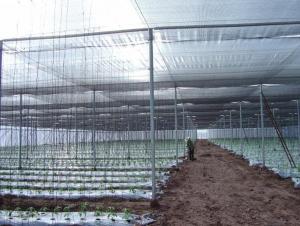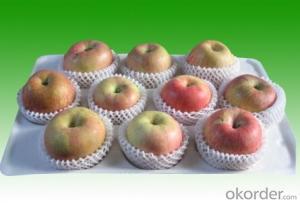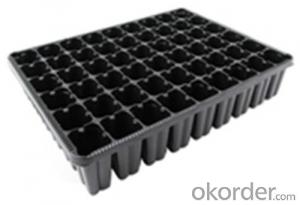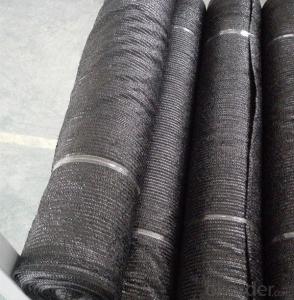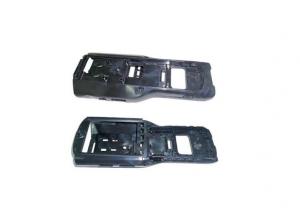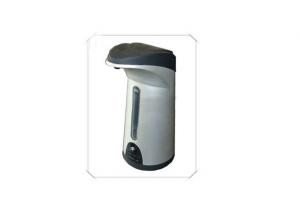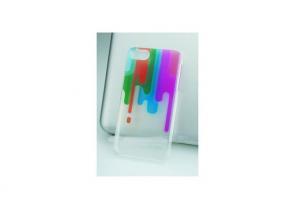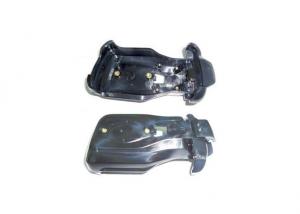China Molds Maker for ABS Shell Parts Competitive Price
- Loading Port:
- China Main Port
- Payment Terms:
- TT or LC
- Min Order Qty:
- 1 Piece pc
- Supply Capability:
- 100 Pieces per Month pc/month
OKorder Service Pledge
OKorder Financial Service
You Might Also Like
Detailed Product Description
1.S136 steel+heat treatment.
2.Mould base:FUTABA from swiss
3.Develop time:20 days after coordination.
4.16 years experience.
What Our Manufacture Does:
1.Automobile : Air –outlet / vent,Rearview mirror,Instrument panel ,Horn so on.
2.Electronic : Wireless receiver parts, USB housing, Mobile phone plastic part, Loptop cover and parts,
remote control , key-press. etc...
3.Mechanical : Percision instrument, Motor support part ,Pump plastic part.
4.Our customers : BBK, Sony, NEC, Sumsung, Sony, Starbucks, Disney, etc...
- Q: What are the different testing standards for electronic plastic?
- There are several testing standards for electronic plastic, including but not limited to: UL 746A, UL 746B, IEC 62368-1, IEC 60695-11-10, and IEC 62133. These standards cover various aspects such as flammability, electrical safety, mechanical properties, and environmental performance of electronic plastic materials and components.
- Q: Can electronic plastic be used in consumer electronics?
- Yes, electronic plastic can be used in consumer electronics. Electronic plastic, also known as conductive plastic, is a type of polymer that has electrical conductivity properties. It can be used in various consumer electronic applications such as circuit boards, connectors, sensors, and touchscreens. Its versatility and ability to integrate electronic components make it a suitable material for consumer electronics.
- Q: How does electronic plastic affect the durability of electronic devices?
- Electronic plastics can greatly enhance the durability of electronic devices. These specialized materials offer excellent resistance to impact, heat, and moisture, protecting the internal components from damage. Additionally, electronic plastics can provide insulation, preventing short circuits and electrical failures. Overall, the use of electronic plastics enhances the longevity and reliability of electronic devices.
- Q: Are there any disadvantages or limitations of electronic plastic?
- Yes, there are several disadvantages and limitations of electronic plastic. Firstly, electronic plastic is not as durable as traditional materials like metal or glass, making it more prone to damage and breakage. Additionally, electronic plastic is less resistant to extreme temperatures and can deform or melt under high heat. It also tends to have lower conductivity compared to other materials, which can limit its performance in certain electronic applications. Furthermore, electronic plastic may contain harmful chemicals or additives that can pose environmental and health risks during production, use, or disposal. Lastly, electronic plastic is not easily recyclable and can contribute to the growing problem of electronic waste.
- Q: Can electronic plastic be used in renewable energy systems?
- Yes, electronic plastic can be used in renewable energy systems. Electronic plastic, also known as organic electronics or polymer electronics, offers several advantages such as flexibility, cost-effectiveness, and lightweight properties. These characteristics make it suitable for various applications in renewable energy systems, such as solar panels, energy storage devices, and energy harvesting systems. Additionally, the use of electronic plastic can contribute to the development of more sustainable and environmentally friendly energy solutions.
- Q: What plastic does the plastic shell of electronic product do?
- General use of ABS, as well as with TOS, TTC and BUC. Alloys are also popular.
- Q: How does electronic plastic impact the overall ergonomics of electronic devices?
- Electronic plastic can greatly impact the overall ergonomics of electronic devices. Its flexibility and moldability allow for the design of more comfortable and user-friendly devices. Electronic plastic can be shaped into ergonomic curves and contours, providing a better fit in the hand and improving the user experience. Additionally, the lightweight nature of electronic plastic reduces the strain on users when holding or carrying devices for extended periods. Overall, electronic plastic plays a crucial role in enhancing the ergonomics of electronic devices, making them more comfortable, intuitive, and easier to use.
- Q: How does electronic plastic contribute to the reduction of static electricity?
- Electronic plastic, also known as antistatic plastic, contains additives that help to dissipate or neutralize static electricity. These additives work by increasing the surface conductivity of the plastic, allowing any static charge to flow through the material and gradually dissipate. This helps to prevent the buildup of static electricity, reducing the likelihood of electrostatic discharge (ESD) which can be harmful to electronic components.
- Q: What are the different methods used to process electronic plastic?
- There are several methods used to process electronic plastic, including mechanical recycling, chemical recycling, and thermal recycling. Mechanical recycling involves shredding the plastic into small pieces, which are then melted and molded into new products. Chemical recycling uses various chemical reactions to break down the plastic into its basic components, which can be used to create new materials. Thermal recycling involves using heat to melt the plastic and convert it into a fuel source or a raw material for other processes.
- Q: Can electronic plastic be used in electronic touchscreens?
- Yes, electronic plastic can be used in electronic touchscreens. Electronic plastic, also known as conductive plastic, possesses the necessary properties to conduct electricity and can be used as a transparent conductive material in touchscreens. It offers benefits such as flexibility, durability, and cost-effectiveness, making it a suitable option for touch-sensitive displays.
1. Manufacturer Overview
| Location | Guangdong, China |
| Year Established | 2011 |
| Annual Output Value | US$50 Million - US$100 Million |
| Main Markets | North America South America Eastern Europe Eastern Asia Western Europe Northern Europe Southern Europe Domestic Market |
| Company Certifications | ISO 9001:2000; ISO 14001:2004 ;OHSAS 18001; RoHS ; SGS ; |
2. Manufacturer Certificates
| a) Certification Name | |
| Range | |
| Reference | |
| Validity Period |
3. Manufacturer Capability
| a) Trade Capacity | |
| Nearest Port | Hong Kong,ShenZhen |
| Export Percentage | 21% - 30% |
| No.of Employees in Trade Department | 3-5 People |
| Language Spoken: | English, Chinese, Japanese, Korean |
| b) Factory Information | |
| Factory Size: | 50,000-100,000 square meters |
| No. of Production Lines | Above 10 |
| Contract Manufacturing | OEM Service Offered |
| Product Price Range | Average |
Send your message to us
China Molds Maker for ABS Shell Parts Competitive Price
- Loading Port:
- China Main Port
- Payment Terms:
- TT or LC
- Min Order Qty:
- 1 Piece pc
- Supply Capability:
- 100 Pieces per Month pc/month
OKorder Service Pledge
OKorder Financial Service
Similar products
Hot products
Hot Searches
Related keywords




